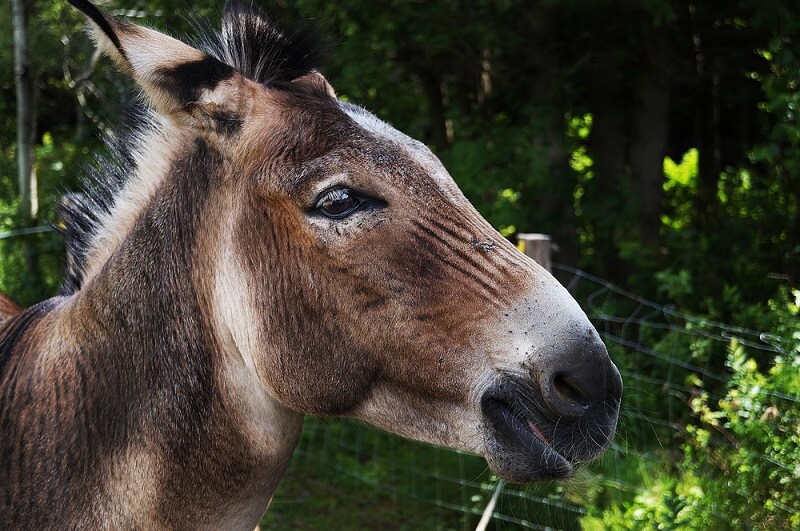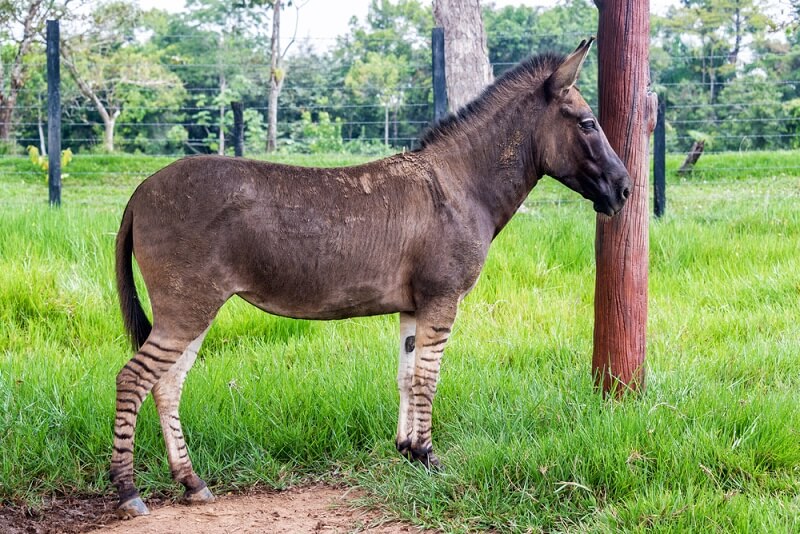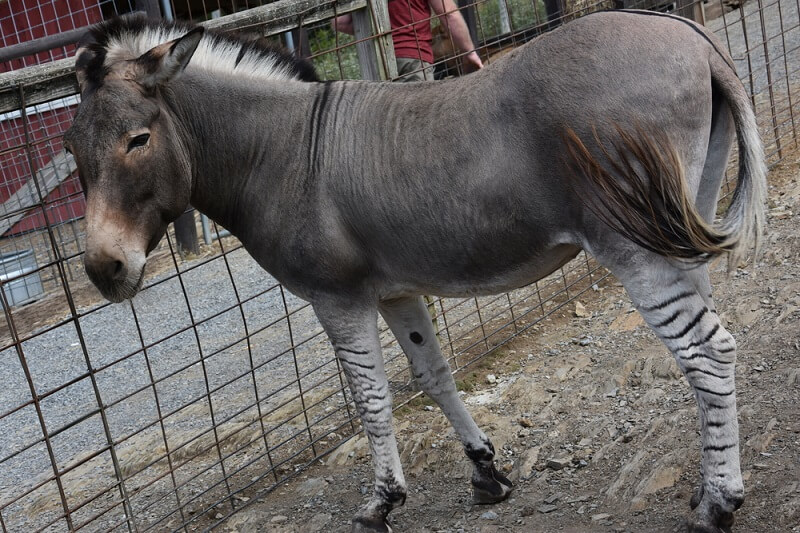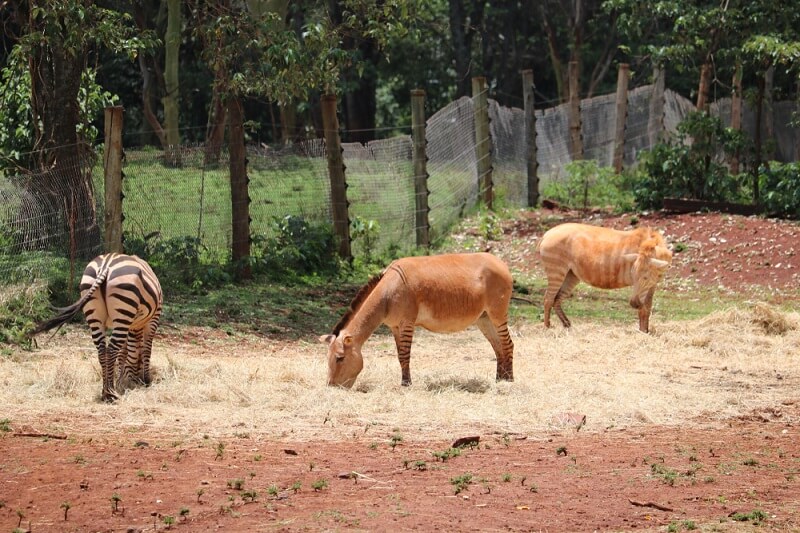
A “zonkey” is a hybrid cross produced by mating a zebra and a donkey. Zonkeys are not a true species because they have an odd number of chromosomes and cannot reproduce. While zonkeys are rare, they are bred in a number of zoos and specialized farms around the world. Zonkeys are also referred to as zebonkey, zebrinny, zebrula, zebadonks, and several other interesting names, depending on who is breeding them and what combination of donkey and zebra species are being used. Typically, zonkeys are very rare in nature and are usually only seen in zoos or on game-animal farms. Zonkeys are one of a number of “zebroids” – or zebras crossed with other members of the horse genus. Since all members of Equus are fairly similar, many combinations are possible. In addition to the zonkey, zebras have also been crossed with horses (zorse) and ponies (zony). None of these “zebroids” produce fertile males, though females can sometimes be fertile. Since none of the males are fertile, the females must be paired with either a donkey or a zebra. The resulting offspring receive the right genes from the father, they may be viable and fertile – though this is a long shot, genetically speaking. Plus, the genetic signature would no longer be half donkey and half zebra. It would contain more of whichever animal was selected as the father. A hybrid animal like the zonkey is not only interesting, it encapsulates many biological concepts that are very important to understand! While it may be surprising that two different species can interbreed, this is not uncommon in biology. Hybrids have been created with a wide variety of species. Here’s a shortlist of some of the most popular species hybrids: And these are just some of the animals that hybridization is possible in. When you include plants, fungi, and microorganisms, the list would be truly massive. There is even evidence that most modern humans are the result of early human hybridization with Neanderthals and other ancient hominids. Essentially, hybrids can even go on to become their own species if they inherit an even number of chromosomes (to ensure the success of meiosis) from relatively closely related species. Many hybrids are not true species because they lack an ability to reproduce successfully. Many horse hybrids, like the zonkey, inherit an odd number of chromosomes – leading to massive complications during meiosis. Animals that are completely unrelated would be extremely unlikely of forming a hybrid simply because the proteins they encode have evolved from such different evolutionary paths. Evolutionary biologist J.B.S. Haldane first noted in 1922 that genetic hybrids are often inviable or sterile. Further, he noted that in most hybrids the heterogametic sex is more affected than the homogametic sex. In mammals, males are the heterogametic sex because they carry both an X and Y chromosomes. Though male zonkeys are viable, they cannot reproduce and are totally sterile. This is why it is impossible to reproduce two zonkeys – only the female can reproduce and most are close to infertile. The reason for sterile hybrids is simple – there is an odd number of chromosomes in a hybrid organism. To create a zonkey, you must combine a plains zebra (44 chromosomes) with a donkey (62 chromosomes). The result is an offspring with 53 chromosomes. Since 53 divides unevenly, the results of meiosis are not balanced haploid cells. Instead, they are often inviable cells that cannot reproduce. Males (the heterogametic sex) tend to be completely sterile because they typically did not receive a full set of functional chromosomes from their parents. Donkeys and zebras are just one of the many hybrids that have been created in the with species in the Equus genus. Though species in the genus have varying numbers of chromosomes, they have evolved along very similar lines. Biologists hypothesize that some speciation events occur when an error in the genome causes entire chromosomes to accidentally be copied or repeated. Though species as distinct as zebras and donkeys may look very different, they express a lot of the same proteins. The same is true of almost every other hybrid equine breed including mules, hinnies, zorses, and zony breeds. While this sometimes produces infertility, there can be positive benefits. For example, mules are much stronger, more heat-tolerant, and live longer than the average horse. More research needs to be done to investigate the benefits of creating a zonkey!
Kingdom
Animalia
Phylum
Chordata
Class
Mammalia
Order
Perissodactyla
Family
Equidae
Genus
Equus
Species
E. zebra (Zebra) crossed with E. africanus asinus (Donkey)
Niche
Hybrid Animal – Herbivore
Length
8-10 in (20-25 cm)
Weight
180 – 1,000 lbs (80 – 450 kg)
Lifespan
15-25 Years
Social Structure
Pack/Herd, Domestic
Conservation Status
Few in nature, not a true species
Preferred Habitat
Domestic
Average Offspring per cycle
Mostly Infertile
Main Prey Species
Grasses, fruits, nuts, vegetation
Predators
None in captivity – lions, crocodiles, other large predators across Africa
The Basics
Can Zonkeys Reproduce?

Interesting Insights from the Zonkey!
Creating a Hybrid
Sterile Hybrids (Haldane’s Rule)

Equine Hybrids

